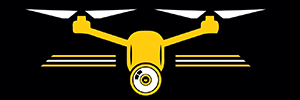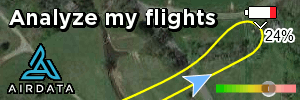Here's exactly what the FAA told me through via email (
[email protected]):
"The FAA has no defined authority for the recognition of a nationwide community-based organization. Unfortunately, we cannot provide you with any criteria."
"In order to operate under section 336 of Public Law 112-95, a model aircraft must, among other things, be “operated in accordance with a community based set of safety guidelines and within the programming of a nationwide community-based organization.”? Currently, the largest nationwide community-based organization that operates model aircraft is the Academy of Model Aeronautics (AMA)."
"While the AMA is the largest community-based organization, guiding you to their resources should not be taken as FAA’s endorsement of their resources."
"The AMA is not a government entity. It is a community-based organization. That’s how they define their organization."
So, it seems the FAA does not endorse the AMA. Until you see said endorsement on the FAA's website, I don't think it's safe to assume any advertisement related material posted on the AMA's website is true.
They do accept the AMA as a community-based organization, as confirmed in a 2016 memo, even though they don't state it on their website:
http://amablog.modelaircraft.org/amagov/files/2016/07/FAA-400feet.pdf
The 2018 FAA Reauthorization Act finally requires them to specify the qualifications for such an organization, but they haven't done that yet.
(h) Community-based Organization Defined.--In this section, the
term community-based organization' means a membership-based
association entity that--
(1) is described in section 501(c)(3) of the Internal
Revenue Code of 1986;
(2) is exempt from tax under section 501(a) of the
Internal Revenue Code of 1986;
(3) the mission of which is demonstrably the furtherance
of model aviation;
(4) provides a comprehensive set of safety guidelines for
all aspects of model aviation addressing the assembly and
operation of model aircraft and that emphasize safe
aeromodelling operations within the national airspace system
and the protection and safety of individuals and property on
the ground, and may provide a comprehensive set of safety rules
and programming for the operation of unmanned aircraft that
have the advanced flight capabilities enabling active,
sustained, and controlled navigation of the aircraft beyond
visual line of sight of the operator;
(5) provides programming and support for any local
charter organizations, affiliates, or clubs; and
(6) provides assistance and support in the development
and operation of locally designated model aircraft flying
sites.
(i) Recognition of Community-based Organizations.--In
collaboration with aeromodelling stakeholders, the Administrator shall
publish an advisory circular within 180 days of the date of enactment
of this section that identifies the criteria and process required for
recognition of community-based organizations.''.










